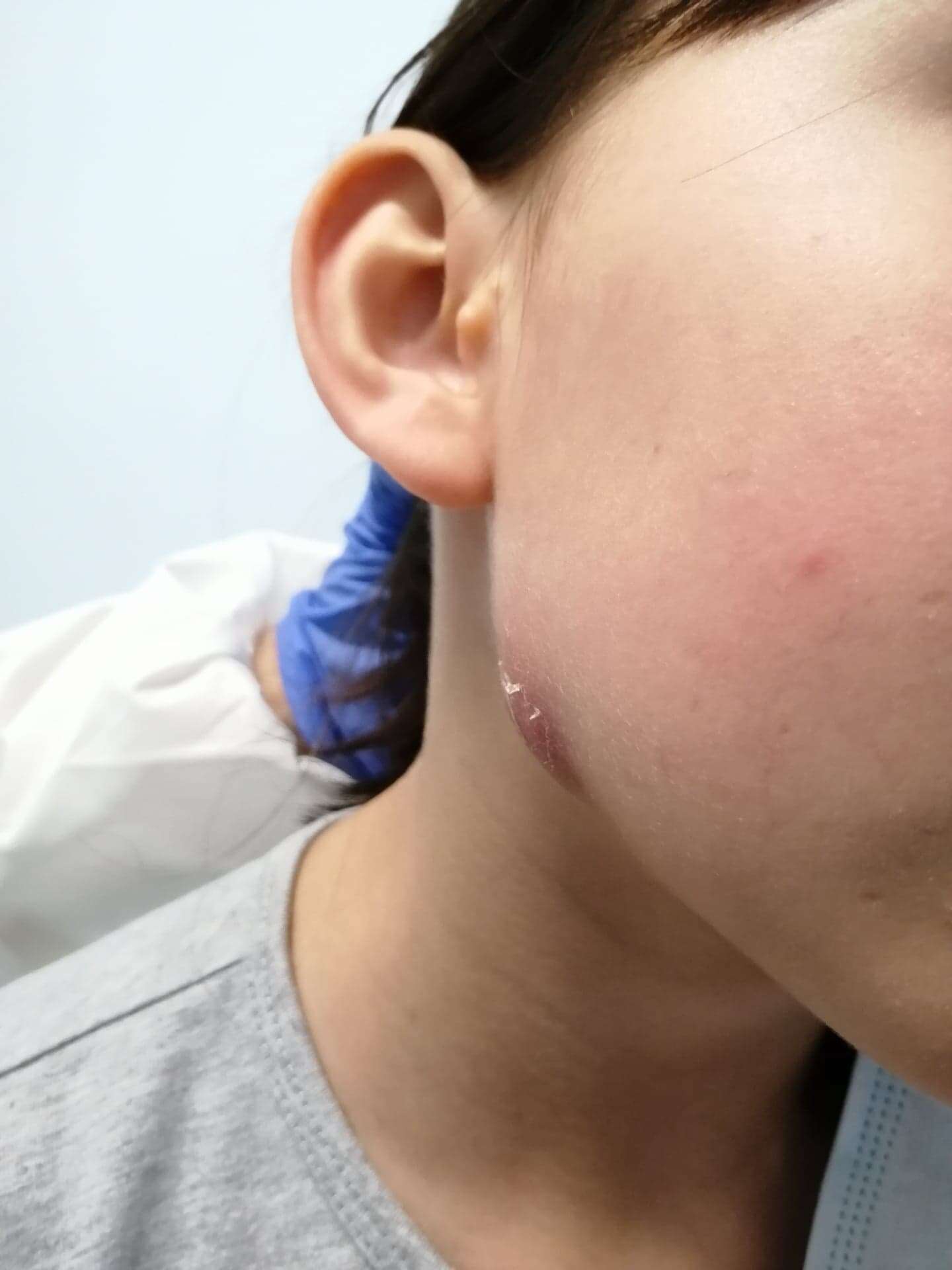
More Than A Dermatological Lesion
Background: Cutaneous fistulas of odontogenic origin are communications between the skin and the oral cavity, originated by dental inflammatory processes, with bacterial invasion of the pulp tissue and consequent pulp necrosis. Drainage can be intraoral or, rarely, extraoral. Caries or dental trauma are the most frequent causes.
Clinical Case: Previously healthy female adolescent, 10 years old. She went to the Emergency Department for right submandibular swelling with a week of evolution, painful, without a history of trauma, fever or other associated symptoms. On examination, the swelling, of about 15 mm, was erythematous, painful on palpation and with a central fluctuation zone. The adolescent had caries on the second molar of the right lower dental arch. She was discharged with an indication to continue antibiotic therapy for another week, at which point in the reassessment there was an improvement of the pain but kept the swelling with central fluctuation. A cervical ultrasound was performed, which revealed: “… Next to the right mandibular angle, an image of about 9 mm, of ill-defined cortical, which extends to the dermis by hypoechogenic pathway… aspects in relation to a probable inflammatory / infectious process with odontogenic origin”. She was observed by Stomatology, that confirmed the diagnosis of cutaneous odontogenic fistula, with indication to comply 14 days of antibiotics and follow-up in Stomatology consulting in order to continue treatment.
Conclusion: Cutaneous odontogenic fistula in pediatrics, although well documented, is often confused with dermatological lesions. It is a diagnosis to consider in the presence of cervical / mandibular lesions. Its frequency has increased due to caries, trauma or endobuccal diseases. Endodontic treatment or dental extraction may eliminate the infection and lead to resolution of the lesion.


Powered by Eventact EMS